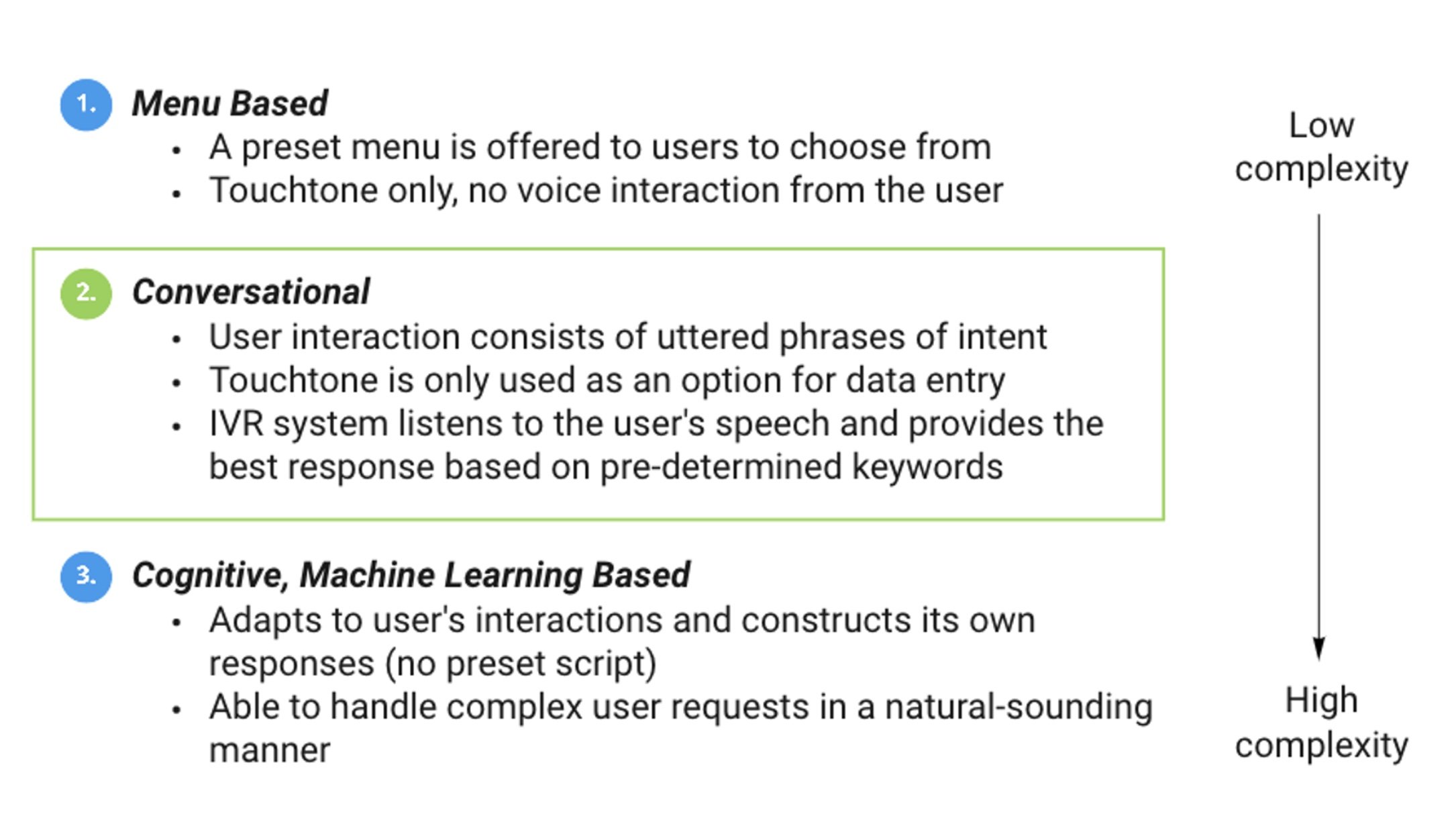Conversational IVR Design
Employer: NTT Data (2023)
What is IVR?
Interactive voice response (IVR) systems are commonly encountered when calling customer service numbers for businesses like banks, airlines, or utility companies. For example, when you call your bank's customer service line, the IVR system might greet you and offer a menu of options: "Press 1 for account balance, 2 for recent transactions, or say 'speak to an agent' for personal assistance." Depending on your choice, the IVR routes you to the appropriate service or department.
Project Overview
Our client, a large life insurance provider, is going through a complete system design overhaul. This includes their IVR system. Their current IVR is menu-based and not a very personalized experience. The system is also putting a lot of callers through to customer service representatives (CSRs). The client wants a more interactive and user-friendly IVR experience for their customers while also reducing the amount of callers that reach CSRs.
Research
We learned through our research it is best practice to create a consistent persona for an IVR system overall. In our case, that persona is “Jennifer”. Jennifer is an American woman who’s about the same age as the typical person calling in. She’s helpful and patient, but not overemotional or overbearing.
The callers for our IVR system are trying to file a life insurance claim or pay their bills. It’s extremely important that our IVR’s voice feel welcoming and trustworthy because these callers are often anxious, in distress, or even possibly grieving.
We also discovered that there are different types of IVR systems with varying levels of complexity. In our client’s case, they want to move from a Menu-Based IVR, which relies solely on touch input, to a Conversational IVR, which is voice controlled and more dynamic. Being able to define the system we were working towards was vital in keeping our work focused and in scope.
Working Sessions
In order to properly design each conversational flow, or what we call “intent flows”, we met with members of the client team to map out the different stages for policy billing conversations that our client typically receives over the phone. Our design team led 4, 2-hour working sessions with a group included policy administrators, CSRs, and the development team that would eventually implement our designs into the actual IVR system.
This was the first time participating in UX work for a lot of the people on the client side. They also often got bogged down by technical details that were outside the scope of our project. Our design team found sessions ran more smoothly when we mapped intent flows before each meeting. We’d then check our assumptions with the client during the session.
Initial intent flows post-workshopCreating the Design System
Because IVR is solely audio-based, we had to create our own design system to visualize each conversational intent flow. There are only two speakers in these flows: the user (denoted in yellow) and the IVR system’s voice (denoted in pink). You can see a simple example of an intent flow below.
Intents and Keywords
Keywords are used by the IVR to identify the intent of the user and then offer them recommendations.
For example, if the user said the phrase "What do I owe you?", the IVR would pick up the keyword string "what do I owe" and offer "What is my payment premium?" and "When is my next due date" as the first two suggested intents for the user to choose from to continue addressing their request.
The scope of this project only included requests related to billing. However, there were other intents that we deemed necessary along the way such as authenticating the user as a policy holder or escalating the user’s request to a CSR.
Final IVR Intent Flows
In the end, we created 25 intent flows that covered all possible billing situations as well as a greeting flow, call escalation, and policy authentication. As you can see in the examples, some of these flows can get pretty unruly. We felt that our design system was robust enough to allow even the longest flows to be easily followed and deciphered by the implementation team.
We designed each intent flow to quickly satisfy callers’ billing information needs without having to talk to a CSR. At the same time, we made sure that users are swiftly put in touch with a CSR when they have a request the IVR cannot handle. This balancing act is how we able to ensure a seamless and enjoyable customer experience without continuing to overload CSRs with call requests.
flow for escalating a user to a csrflow for Changing payment draft dateflow for changing or saving a payment method









